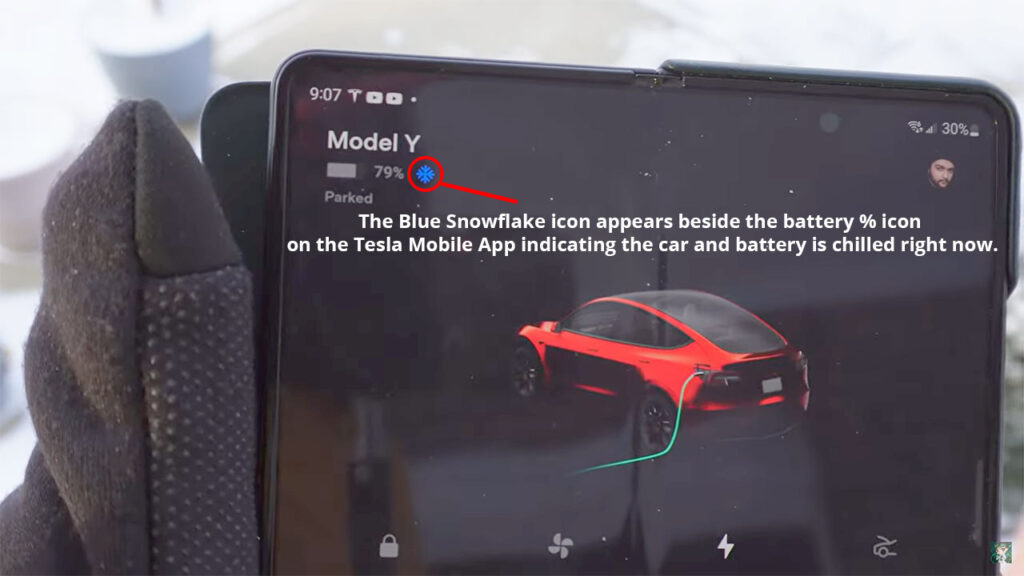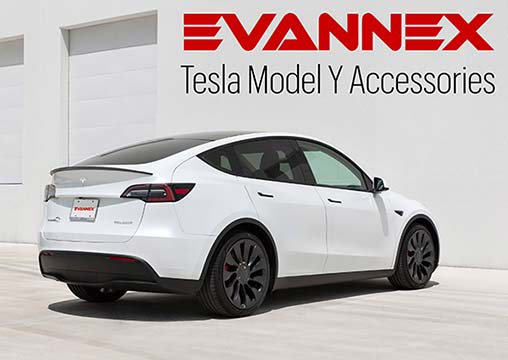The actual test of an electric vehicle is conducted during cold weather. And if you own a Tesla, it shines in such times. A Tesla Model Y owner shows us how he was able to melt ice and snow off of his vehicle in freezing temperatures of around 1°F (-17°C).
The exciting part of this procedure is that Tesla owners can remotely melt the snow covering their cars using the Tesla mobile app.
Using the Defrost Mode from the Tesla phone app starts the procedure of blowing hot air inside the vehicle. This brings the Tesla vehicle’s cabin interior temperatures to bearable levels, particularly melting ice from the windscreen and rear window glass.
One thing to remember here is that the frozen door handles of Tesla Model 3 and Model Y don’t unfreeze using the Defrost Mode. The frozen door handles are stuck as ice is accumulated in the gaps between them and the door’s body.
Previously, Tesla Model Y/3 owners used to blow a slight thump around the door handle with the sides of their hands to crack the ice around it.
But after a recent free over-the-air software update, Tesla Model Y and Model 3 owners can now use the “Unlatch Door” option from their Tesla mobile phone app to unlock and slightly pop out the door and then manually open it (see how to do it in the video below).
While Tesla introduced the remote cabin preconditioning option a couple of years ago, the specific Defrost Mode was released last year. Cabin pre-heating or cooling works for both cold and hot weather conditions respectively.

So, the owner of this red Tesla Model Y put out his car in the cold at temperatures of up to 1°F (-17°C). Now was the time to test the vehicle’s ability to melt the ice from key areas as well as bring the cabin’s temperature to cozier levels.
To activate the defrost process, open your Tesla app, scroll down the controls, and press the Defrost Car option.
As soon as the Defrost Car option is selected, a Tesla vehicle kick-starts the heat pump. Running the heat pump in such conditions creates a noise coming from the frunk (front trunk) of the car but that’s not a sound to worry about.
Tesla first integrated the heat pump innovation in Model 3 cars. And with the success of this experiment, the electric automaker was convinced to install it in its entire lineup later on.
Within 15 minutes, the ice melted from this Tesla’s windscreen and rear window. The cabin interior temperature was also elevated to a warmer level that is bearable for the human body.
The interesting thing that I noted was the drop in battery percentage or state-of-charge (SoC) in this operation. Before the Defrost Car mode was turned on, the battery was at 79% and after 15 minutes of blasting hot air inside the car and battery pack, only 2% battery was lost hence the vehicle was warm enough to drive at 77% SoC.
The owner of this Tesla Model Y turned off the seat and steering wheel heaters because he did not want to drive after defrosting the car. So this must have saved some percentage of the battery in this specific test.
Let us know your experience with the Telsa Defrost Mode in the comments section below.
Stay tuned for constant Tesla updates, follow us on:
Google News | Flipboard | RSS (Feedly).
Related
- Tesla expands the rollout of FSD v12.5 to Hardware 4 vehicles, no sign of it on Cybertruck yet
- Tesla begins the rollout of FSD v12.5 to employees and select external testers (first impressions)
- Watch the new Tesla Model 3 Performance run a quarter-mile in under 11 seconds
- SpaceX performs a static fire test on Flight 5 Super Heavy rocket booster (videos, pics)
- Tesla pushes FSD v12.4.3 to a wider user base
- Tesla Semi spotted with a suite of sensors on the roof, Elon Musk approves its volume production
- FSD v12.4.2 receives first impression reviews from non-employee Tesla owners
- Watch Tesla Matrix Headlights in action at curves with the steering wheel movement










